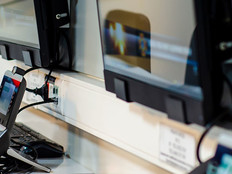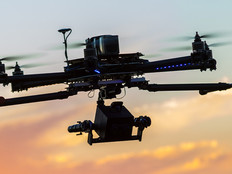Designing the Next-Generation Police Cruiser
Nowadays, the words “high tech” and “police cruiser” are often spoken in the same breath.
Cities across the country are replacing older Crown Victorias and Chevrolet Impalas with new Dodge Chargers and Chevrolet Caprices, complete with automatic license plate readers, notebooks with virtualized desktops and video-recording equipment.
Law enforcement technology has been a hot topic in recent weeks, following the shooting death of Ferguson, Mo., teenager Michael Brown. And public-safety departments across the country are considering the need for a dedicated broadband network for emergency responders.
“Vendors are moving quickly to facilitate the rollout of the FirstNet public safety broadband network, producing modems and mobile devices using the newly dedicated bandwidth,” writes Matt Parnofiello, a public-safety business development manager for CDW•G.
Cost and functionality will be top of mind for law enforcement as FirstNet is developed. In Maryland, police officers and state troopers pay about $50 to $75 a month per mobile device. The cost varies by jurisdiction and includes the cost of accessing data over commercial wireless networks from notebooks mounted in their cruisers, says Raymond Lehr, Maryland's statewide interoperability director.
“We now operate under a mobile-first paradigm, where tools and information are extended from the enterprise to the field as their primary function instead of as an add-on feature set,” Parnofiello explains.
In a recent blog post, he also highlights in-vehicle technology and tips for outfitting 21st century police cars:
Power and Connectivity: Netbooks and other electronics can be connected directly to the vehicle’s battery. But investing in a power distribution unit (PDU), such as the Havis ChargeGuard, has many advantages. PDUs often have built-in timers and battery sensors that allow electronic devices to power down automatically with the ignition, after a specified period of time or before the car battery is drained.
Communication: Basic public-safety IT communication protocols include cellular, GPS and Wi-Fi. At the simplest level, these functions can be integrated into most mobile devices. For increased accuracy, bandwidth and consistency, roof-mounted antennas should be used.
Telephony: Phones should be mounted safely to maximize functionality and avoid distraction. They can be powered via USB, leverage the car’s audio system via Bluetooth and connect to the in-car Wi-Fi. Proper integration of phones in the mobile work environment makes the difference between having a powerful tool or a dangerous distraction.
Mobile printing: This allows delivery of reports and citations on scene. Ruggedized mobile printers are available in the traditional 8.5-by-11-inch format, as well as 4 inches. Printers can be mounted almost anywhere; for example, under an armrest, on the cage wall, dash, glove box or even in place of a car seat headrest.









